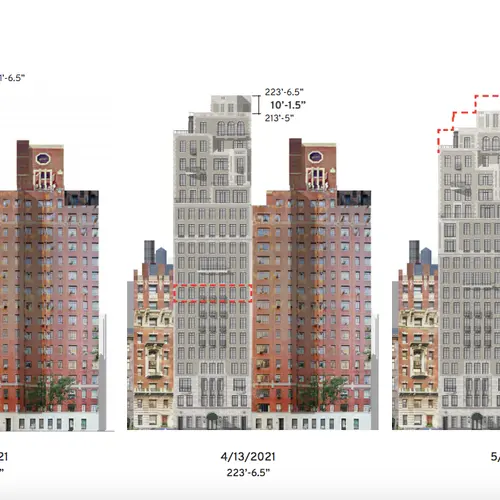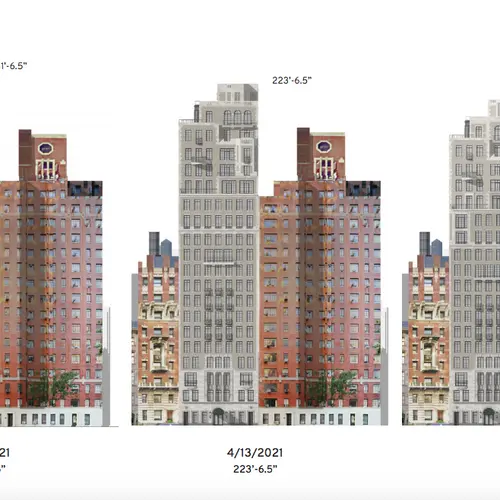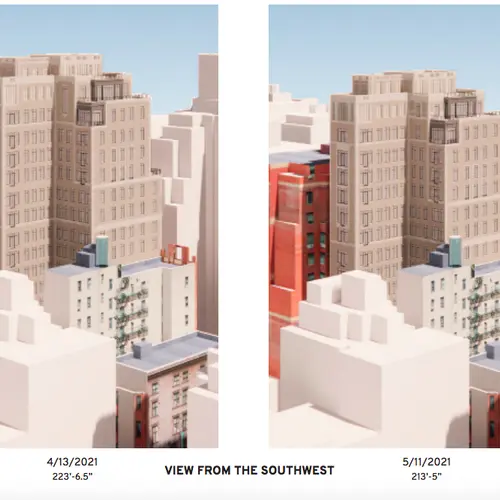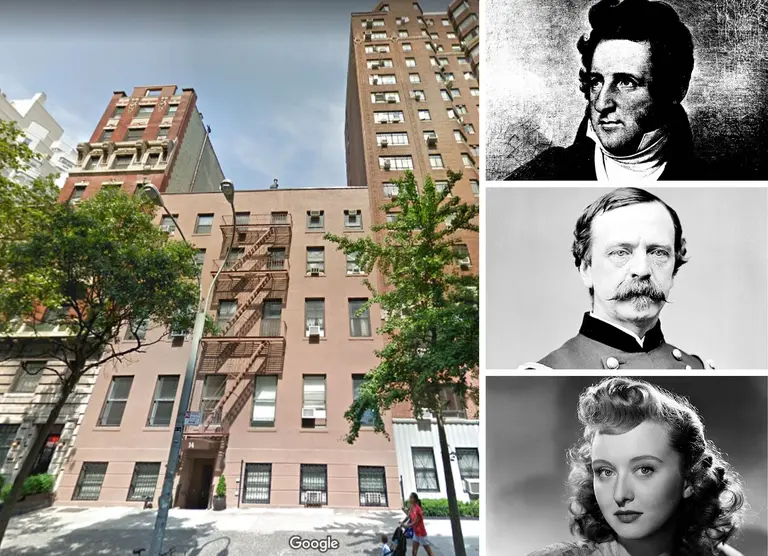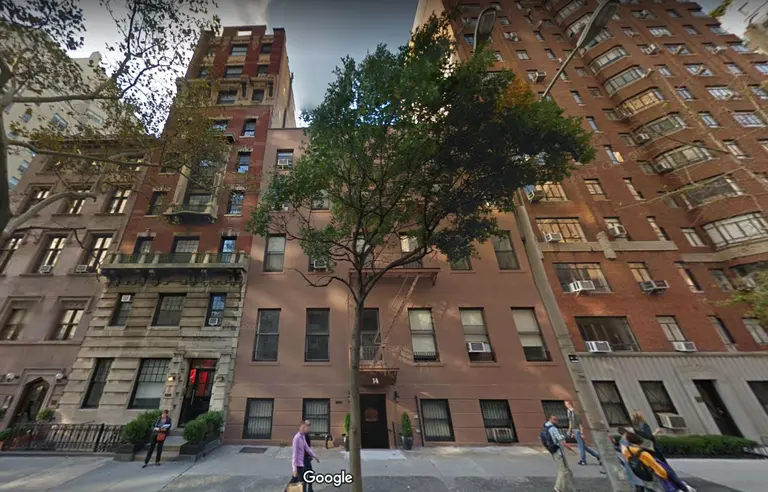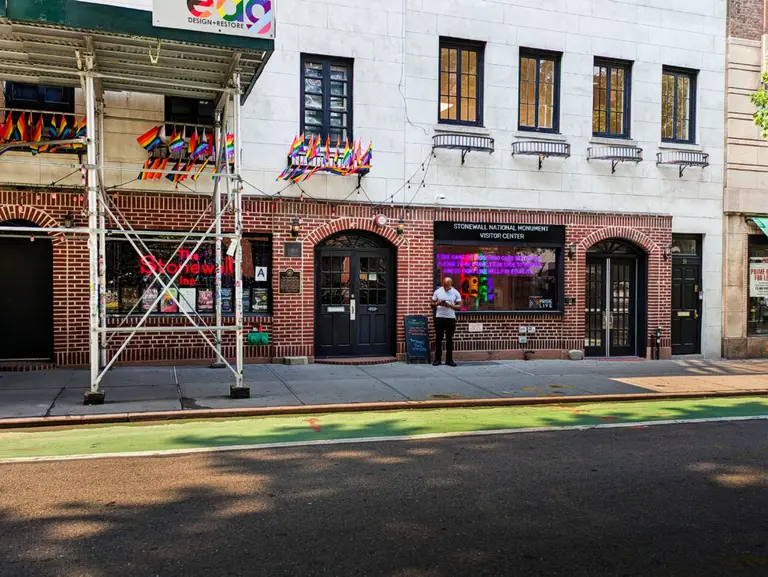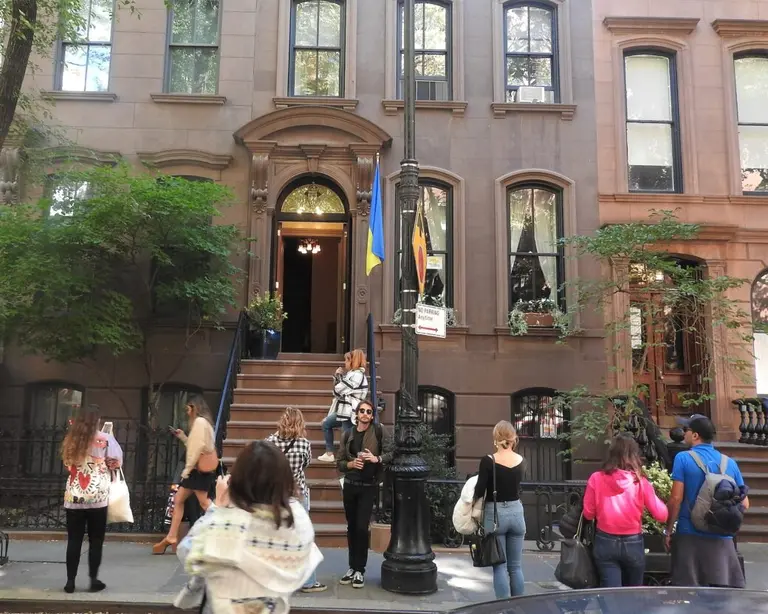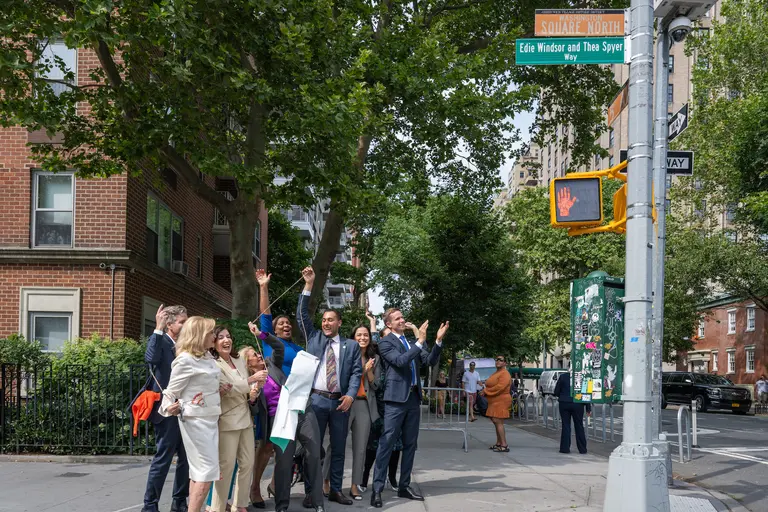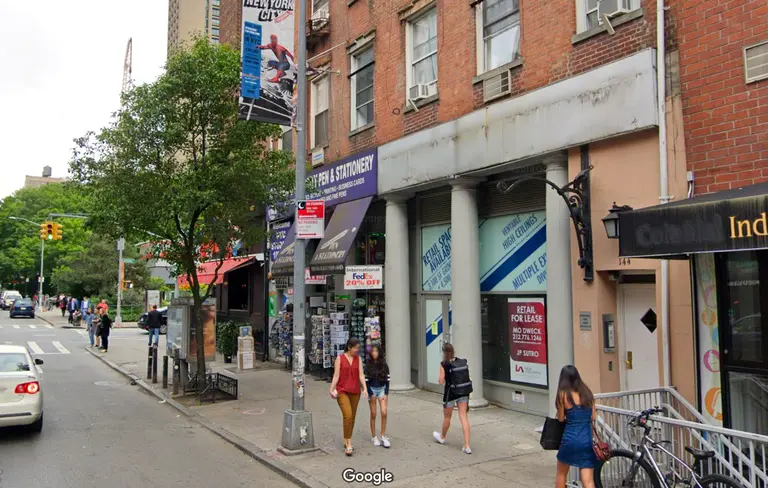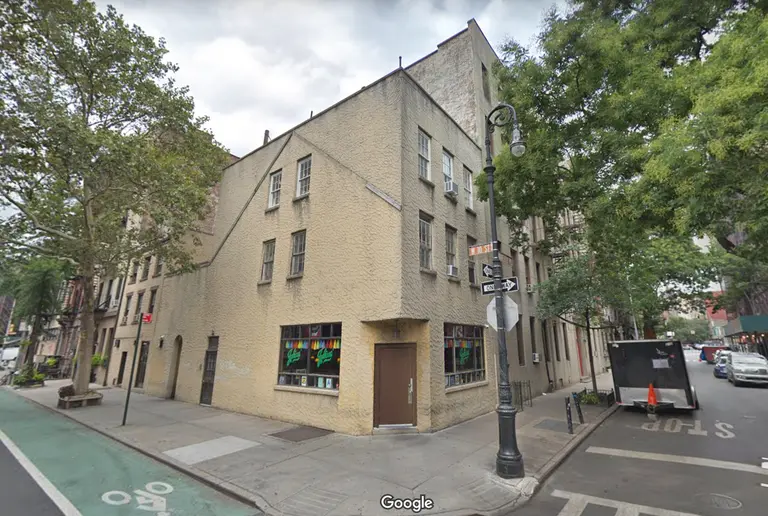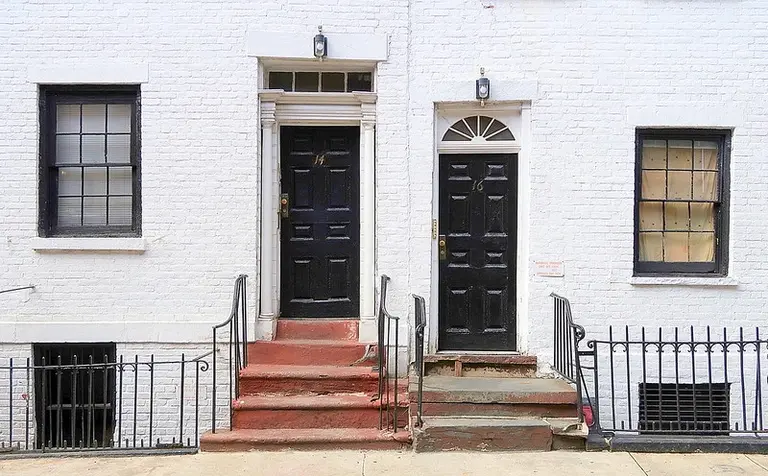170-year-old Greenwich Village buildings will be razed and replaced with high-rise condo tower

Rendering courtesy of Robert A.M. Stern Architects, Acheson Doyle Partners, Hill West Architects
Two five-story apartment buildings in the Greenwich Village Historic District will be demolished to make way for a 213-foot-tall luxury condo tower. The Landmarks Preservation Commission on Tuesday approved plans from Madison Realty Capital and City Urban Realty to raze 14-16 Fifth Avenue, an apartment building that sits just north of Washington Square Park. Preservationists campaigned against the demolition of the building since the project was first announced in 2017, citing the history of the 170-year-old structure as significant enough for protection.
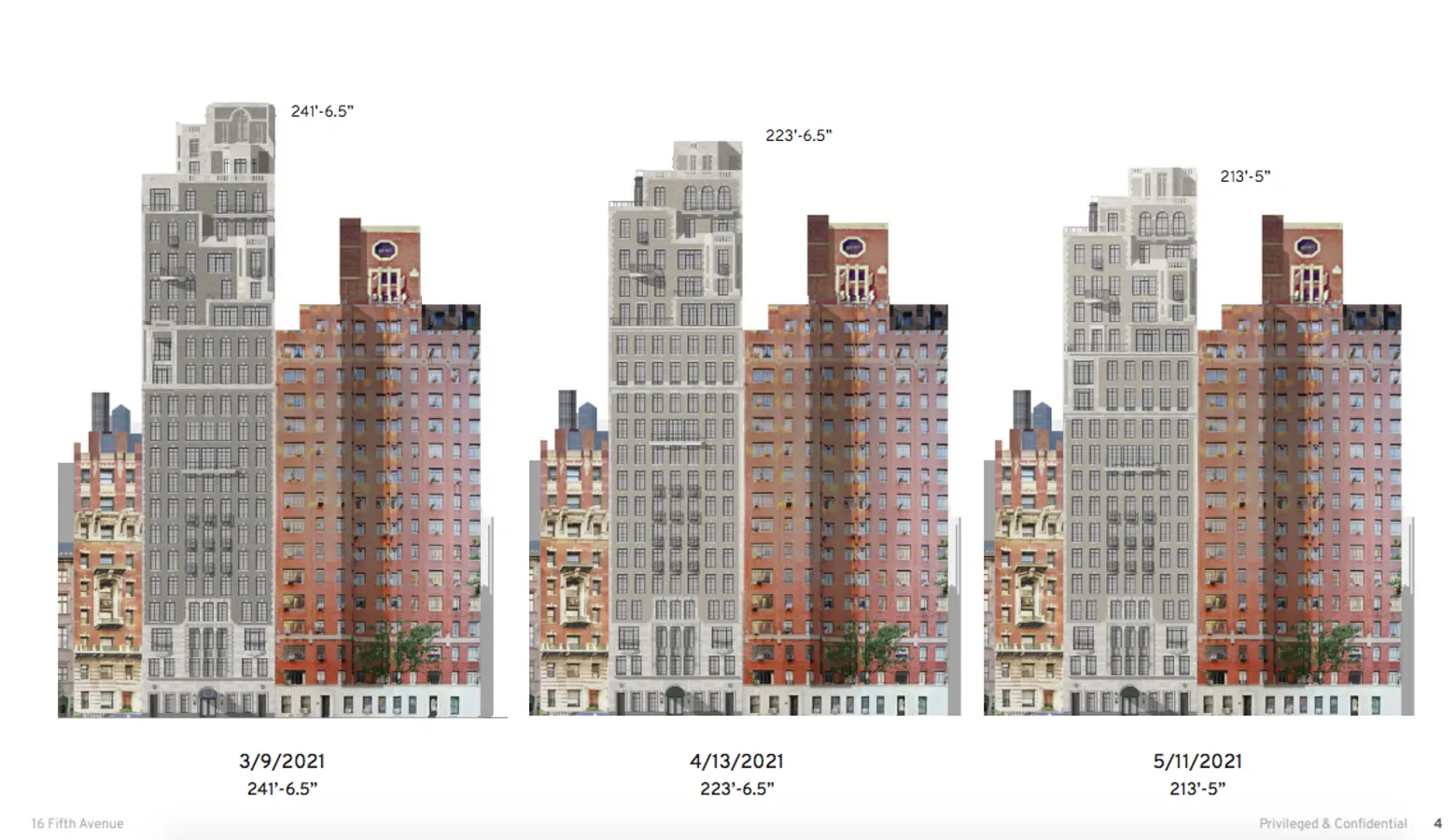
Rendering courtesy of Robert A.M. Stern Architects, Acheson Doyle Partners, Hill West Architects
Designed by Robert A.M. Stern Architects with Acheson Doyle Partners and Hill West Architects, the new tower features a warm brick facade with limestone accents. Since first presented to Landmarks in March, the proposed tower’s size has shrunk from 241 feet tall to 213 feet tall, the latter of which was part of the revised plan approved by the commission on Tuesday.
Even with the latest height reduction, the new building will be among the tallest on lower Fifth Avenue and in the historic district, with the pre-war co-op, One Fifth Avenue, a notable exception.
The Gothic Revival townhouses at 14-16 Fifth Avenue date back to 1848, but a renovation sometime after 1925 combined the houses into a single multifamily building and significantly altered the original exterior. Preservationists have argued that residents who occupied the homes throughout its 170-year history are an important part of the development of the Greenwich Village Historic District.
As Andrew Berman, the executive director of Village Preservation, wrote in an article last year for 6sqft, 14-16 Fifth Avenue was home to “Civil War generals, Gold Rush writers, Oscar-winning actors, railroad magnates, pioneering industrialists, inventors, and politicians,” including sewing machine inventor Isaac Merrit Singer, General Daniel E. Sickles, and Academy Award winner Celeste Holm.

Rendering courtesy of Robert A.M. Stern Architects, Acheson Doyle Partners, Hill West Architects
However, the development and design team noted the building does not retain any significant architectural detail and lacks cultural significance.
“We agree that several people have lived in this building over time,” Drew Hartley, principal at Acheson Doyle Partners, said during a Landmarks meeting on April 13. However, according to Hartley, “no cultural or historic events occurred in the building.”
Most of the commissioners applauded the cohesive design of the building, but nearly half said they were not comfortable with demolition. “I think the design is wonderful,” Commissioner Michael Goldblum said. “I don’t think that’s enough to justify the demolition of the building.”
Commissioner Michael Devonshire also said he was “totally against” demolition. “We don’t preserve historic districts by demolishing the historic resources that are within them,” Devonshire said.
However, LPC Chair Sarah Carroll said the condition of the buildings is “so heavily altered they lost their integrity to their period of significance.” Carroll added: “I currently don’t think they contribute to the district.”
The application was approved by the commission in a 6-5 vote. See the approved proposal in its entirety here.
“It’s incredibly disappointing that the Landmarks Preservation Commission would approve the demolition of a landmarked 170-year-old structure connected to some of the most important figures in New York and American history,” Berman of Village Preservation told 6sqft in a statement. “And why? For a high-rise of 3rd or 4th homes for the super-rich that will actually contain fewer units of housing than the modest 5-story structure it’s replacing, which was emptied of its rent stabilized long term tenants to make this project possible.”
“We are grateful for the highly unusual split vote and the five Commissioners who spoke so passionately against allowing demolition, and the thousands of New Yorkers, scholars, academics, writers, and preservationists who opposed this decision, as well as the elected officials who were part of this fight.”
RELATED:
